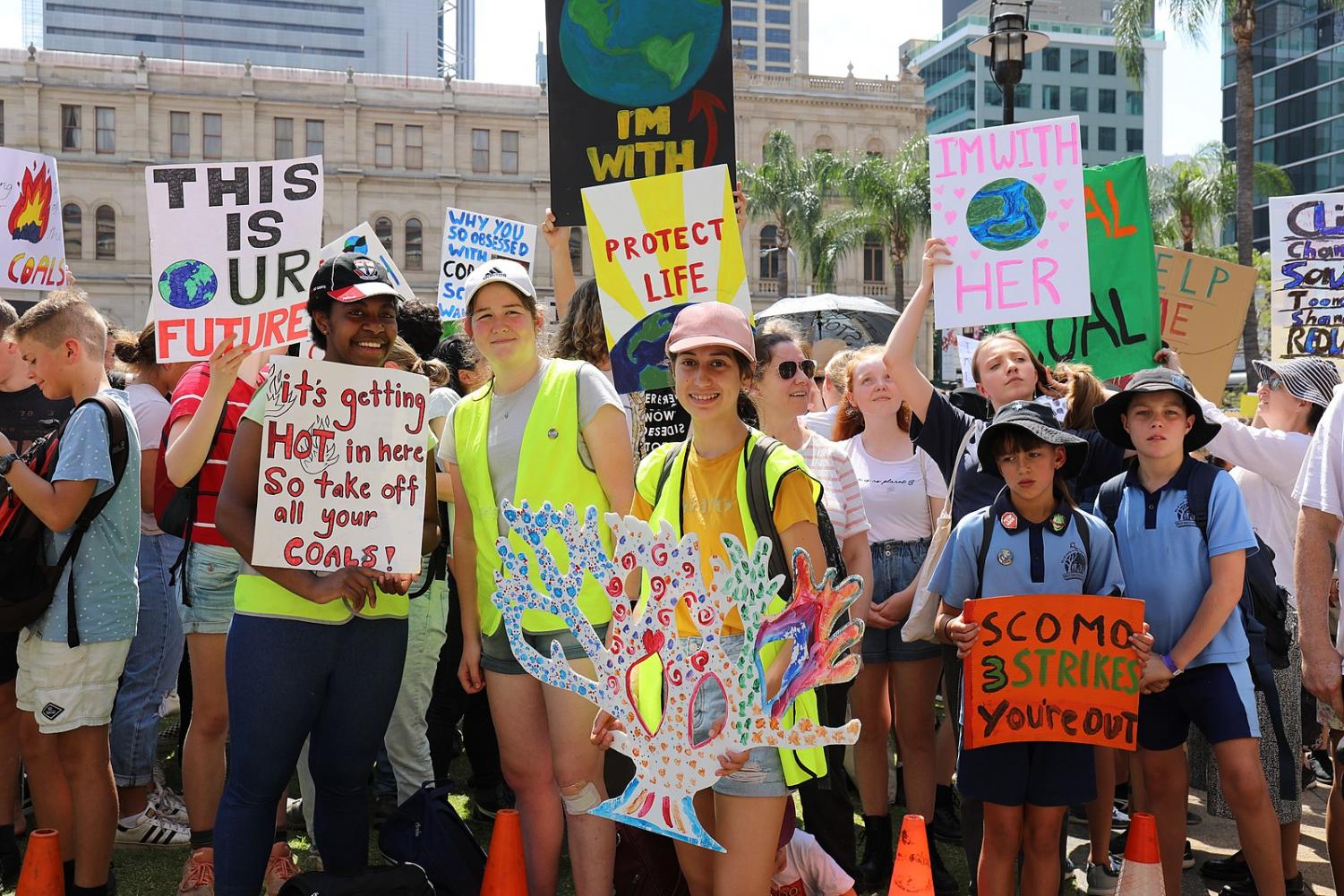Biola is an interesting place to study environmental science. The intersection of science and religion is a complex relationship that has oscillated throughout history between conflict and collaboration. In this age of climate change posing an imminent threat to the well-being and security of every person, being united against that threat is of the utmost importance. That is why environmental science teachers and professors are on the front lines of cultivating that unity and passion for climate action in young people.
BROWNING: HOPE IN THE MIDST OF DESPAIR
Because I waited until my senior year to take my science elective, I am currently taking an introduction to environmental science course taught by Kevin Browning — a soft-spoken friend to gorillas and lizards — whose approach to teaching biology centers around hope for a better and healthier planet in the future.
Browning believes that hope is necessary as humanity collectively navigates a future of climate extremes because environmental science is a rather depressing topic in 2023.
“Part of the problem, and why there’s so many people in despair are that there are so many people who don’t know how to find hope,” Browning said. “And so they end up writing articles that are just doom and gloom. And they end up writing or making movies that are just like fear based even if the science is right, even if the message is accurate. Many people are forgetting that hope is the primary motivator.”
Browning makes a good point: catastrophizing a problem never helped anybody. It is hard to focus on good news, however, when the bad news is so very bad, and when many people would rather avert their eyes from it. Unfortunately, it is necessary that a portion of this article address that doom and gloom that Browning referred to.
SOME BAD NEWS
Climate change researchers at NASA reported that 2022 was the fifth warmest summer on record, and the last nine consecutive years have been the warmest nine on record.
The warmer-than-usual summer of 2022 took a toll on the earth and everyone in it, but some more than others. In Sep. 2022, monsoon rains in Pakistan pummeled the region, and subsequent floods in agricultural areas have resulted in food shortages across the country. In Florida, Hurricane Ian became one of the most devastating hurricanes on record to strike the state.
Closer to home here in California, on Jan. 5, 2023, Santa Cruz residents were urged to avoid the coast after piers through Capitola and Seacliff beaches sustained heavy damage from waves measuring up to 48 feet high. The waves caused over $15 million in damages to local businesses, homes and infrastructure. Even president Joe Biden paid a visit to the coastal town to show his support. Santa Cruz County residents are reeling from the natural disaster, and California will likely see more just like it.
These types of unusually destructive weather patterns are catalyzed by increasing carbon emissions, which, according to data provided in the Global Carbon Budget, were the highest on record in 2022.
SOME GOOD NEWS
Evidently, Browning is right about there being quite a bit of bad news to doom-scroll through these days. Thankfully, there is also good news in environmental science.
In response to decades of environmental upheaval, a long-awaited policy change came in the form of the Inflation Reduction Act, which was put into effect at the start of 2023, the purpose of which includes providing incentives for businesses to invest in renewable energy. The United States Environmental Protection Agency explained that “taking advantage of Inflation Reduction Act incentives, such as tax credits, is key to lowering GHG emission footprints and accelerating the clean energy transition,” and it “offers new access to tax credits as well as grants and incentives to reduce air pollution, with an emphasis on reaching disadvantaged populations and communities with environmental justice concerns.”
Hopefully the Inflation Reduction Act will move U.S. politics in a direction toward a less polarized political landscape when it comes to environmental issues.
HOW PROFESSOR BROWNING FINDS HOPE
“I look to people who inspire me, like Jane Goodall, or Sir David Attenborough, who do a lot of work around hopefulness and talk a lot about hopefulness,” Browning said. “There’s sort of only two options if climate change is a real thing: we can live in avoidance, despair and hopelessness and not contribute, maybe even contribute to the problem, or we could live in hope and choice, and know that there is something we can do. And that we matter.”
The doom and gloom news must have gotten society somewhere, because according to Forbes, Gen Z is emerging as the sustainability generation. Young consumers in 2023 are opting for more sustainable clothing brands and metal straws—but is the current sustainability trend actually helping?
Harvard Business Review published an article in 2019 titled “The Elusive Green Consumer,” which unpacked how the informal understandings of what is acceptable in social groups regarding consumerism in America is shifting incrementally toward being more conscious of the state of the planet. The power of social influence cannot be overstated, but there is such a thing as the intention-action gap, which occurs when one’s values, attitudes or intentions don’t match their actions. While buying from more sustainable fashion brands and using metal straws are good action steps, they are not as good as simply consuming less.
“When it comes to our environmental footprint and sustainability, there are big fish and there [are] little fish,” Browning said. “Whether or not you’re using a straw whether or not you buy from this sustainable company, or this sustainable company, we can get so caught up in whether or not this thing we’re purchasing is super sustainable.”
Browning went on to explain that minimizing consumption in general is the best option, and that trying to borrow items in favor of buying new ones when possible can go a long way.
“We are all either consumers, addicted to consumerism, or we’re recovering consumers. And I consider myself a recovering consumer, where I want to buy everything all the time, but I have to really think about it and intentionally try not to do that,” Browning said.
Unfortunately, sometimes simply not buying a thing is not an option.
“An example is like in the art department, the inks that we use for our printers or something — we don’t have a lot of options for different things we can buy,” Browning said. “Ultimately, we have to think about, do we choose to sell off all our printers in the entire art department? Or do we recognize that actually, printing and artmaking has value to it.”
Responsible and sustainable consumption is difficult in a capitalist economy, where even art making is complicated by the way that society has grown reliant on exhaustible resources.
For the hopeful environmental science student, minimizing one’s consumption is a good place to start on the way to “living in such a way that the earth will be grateful for you,” as forest biologist Dr. Robin Wall Kimerer implores us all to do.












